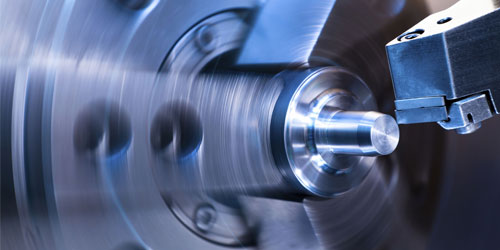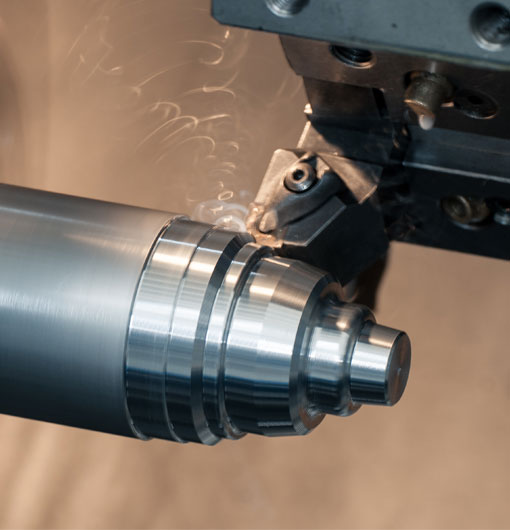CNC turning is a critical process in the world of manufacturing, allowing businesses to create intricate, high-quality parts with ease. As CNC technology continues to advance, it's essential for businesses and manufacturing professionals to stay well-informed about these developments. This blog post will discuss various tips, techniques, and best practices surrounding CNC turning to help you master this vital skill.
Understanding the Basics of CNC Turning
Before diving into the finer details of CNC turning, it's crucial to have a solid understanding of the process. CNC〞or Computer Numerical Control〞is a technology that uses computers to control machine tools, such as lathes and mills. In CNC turning, a lathe, a particularly specialized machine tool, rotates a workpiece at high speeds while cutting tools shave off material to create the desired shape.
Types of CNC Lathes and Their Applications
CNC lathes come in various types, each with its unique features and applications. Understanding these differences can help you choose the best lathe for your projects:
1. Horizontal CNC Lathes: Ideal for simple, small-to-medium-sized parts, horizontal lathes are the most popular option in the CNC turning world. They are best suited to turning bowls, containers, and cylinders.
2. Vertical CNC Lathes: These lathes feature a vertically-positioned spindle, which works best for large, heavy workpieces. Vertical CNC lathes excel at turning brake drums, flywheels, and large disks.
3. Swiss-type CNC Lathes: For those in search of high precision and efficiency, Swiss-type lathes are your best bet. They are excellent choices for creating small, complex parts with tight tolerances, such as those found in the medical and aerospace industries.
Tips and Techniques to Enhance Your CNC Turning Skills
With a firm grasp of the basics, you can now turn your attention to improving your CNC turning techniques and operations. Consider these tips:
Optimal Tool Selection and Geometry
Choosing the right cutting tool and geometry is crucial, as it directly affects the part's quality, production time, and machining cost. When selecting a tool, consider the material type, machining requirements, and desired finish. Carbide inserts are a popular choice due to their versatility, durability, and affordability. Remember to keep tool geometries relatively simple, as complex geometries are more likely to hinder efficiency.
Fine-tuning Your Toolpaths
Optimizing your toolpaths can significantly reduce CNC turning cycle times and increase productivity. Try the following:
Use Constant Surface Speed (CSS): CSS keeps the cutting speed consistent by adapting the spindle's RPM to the part's curvature. This allows for smoother turning, prolonged tool life, and a flawless finish.
Employ Roughing and Finishing Passes: Separate roughing and finishing passes can enhance the part's quality, as well as save time. Roughing is when the tool removes more significant amounts of material, and finishing refines the surface to the final dimensions.
Effective Chip Control
Managing chips can help avoid tool damage and improve efficiency. Use high-pressure coolant systems, chip-breaking inserts, and optimized cutting parameters to promote adequate chip evacuation.
Opt for Automation
CNC lathes are highly compatible with automation, making them the perfect tools for boosting efficiency and production rates. Incorporating robots or gantry systems can greatly reduce labor costs and human errors.
Best Practices to Follow in CNC Turning
Finally, observe these best practices to safeguard your machinery, maximize part quality, and ensure long-term CNC turning success:
1. Perform Regular Maintenance: Keep your CNC lathe in top working condition by conducting regular maintenance, such as cleaning, lubricating, and inspecting for signs of wear.
2. Prioritize Workplace Safety: Safe work practices are essential, so always follow safety guidelines, wear proper personal protective equipment, and keep the work area clean and organized.
3. Invest in Employee Training: Your staff should receive ongoing CNC training to stay up-to-date with advancements in the field. This will ensure safe and efficient operation of your equipment.
4. Adapt to Industry Changes: Don't be left behind when new technology or techniques emerge. Staying informed and adapting to these changes can give your business a competitive edge.
In the evolving world of CNC turning, it's crucial to stay abreast of the latest tips, techniques, and best practices. This knowledge will not only help you improve your skills but also boost your productivity and maximize the return on your CNC turning investment. We hope this blog post has provided valuable insights and sparked your enthusiasm for mastering the art of CNC turning.
cnc turn













